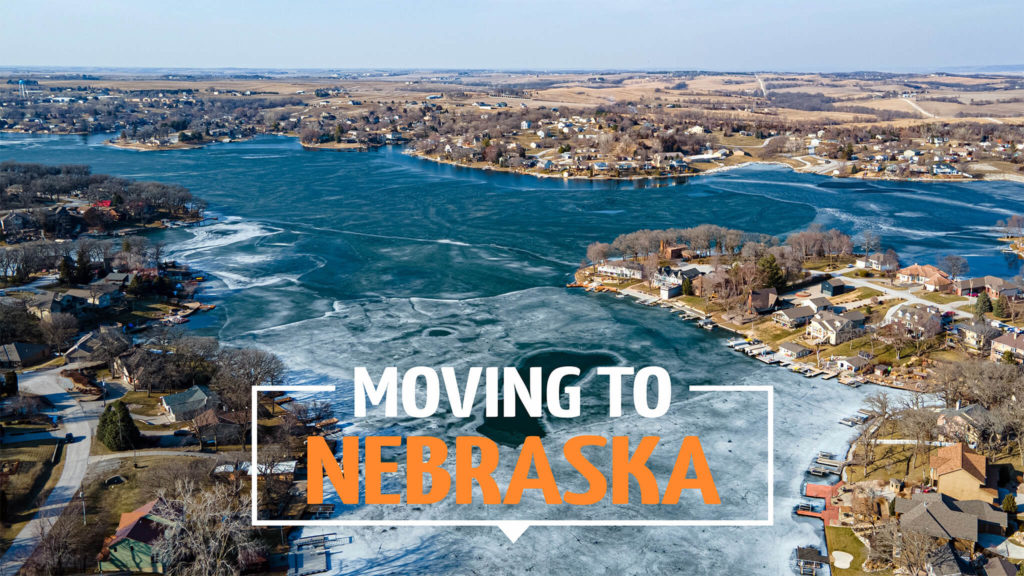Nebraska’s metro area is one of the most thriving in the United States, according to U.S. News. Located in the middle part of the United States, Nebraska is a state with a relatively small population.
Nebraska is also called the Cornhusker State and is home to the world’s largest indoor rainforest, five fortune 500 companies, a friendly community, and a booming job market.
The state has a lot of jobs as well as being one of the most affordable states in the nation. Additionally, Nebraska healthcare is cheaper than the national average. Those considering relocating to Nebraska need to prepare for several things.
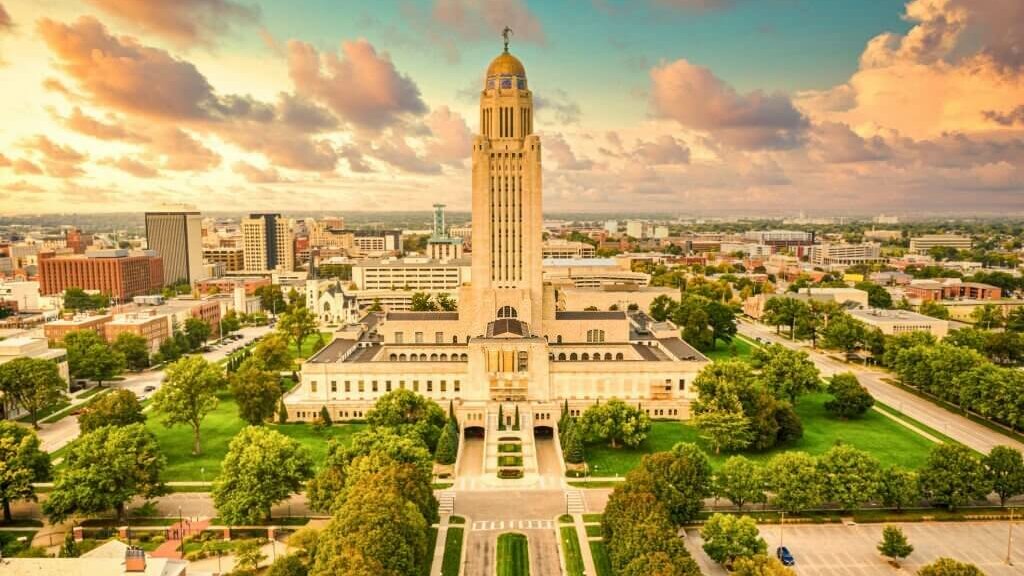
There are five Fortune 500 companies in Nebraska, and Nebraska has a robust economy, a friendly population, and a thriving tech scene. This state might be the most underrated in America for its healthy housing market and low cost of living.
Now that you have decided where you want to move to, let’s give you a quick overview of what you need to know about moving to Nebraska. Hopefully, it will make your choice easier or will reassure you that you are making the right decision. So, let’s just get started!
[elementor-template id=”13242″]
Cost of Living
According to the world population review, Nebraska’s cost of living index is 90.8. It is comparatively lower than the united states index average of 100, which is due to the abundance of land and low population density. Also, the crops and meat are produced locally, so there’s no need for transportation costs.

There is less cost of living in Nebraska than it is in the U.S. as a whole. According to data from the Bureau of Economic Analysis, Nebraska offers living costs for 10.5% less than the average cost nationwide. According to the Cost of Living Index for all states, Nebraska ranks 13th lowest overall.
Three metropolitan areas are located in Nebraska. Omaha-Council Bluffs is Nebraska’s most expensive metro area, where the cost of living is 7.9% cheaper than the national average and 2.6% more expensive than the state’s average.4
Omaha tends to be a relatively inexpensive place to live for many people. It is possible to purchase groceries at a 6% discount compared to the average price in the country. On a deeper note, a carton of eggs and a gallon of milk each cost roughly $1.71, respectively.
| Nebraska | US | |
|---|---|---|
| Median Home Value | $147,800.00 | $204,900.00 |
| Median Monthly Rent | $805.00 | $1,023.00 |
| Average Car Insurance | $1,411.00 | $1,517.00 |
| Healthcare cost for Single Adult | $5,556.00 | $4,266.00 |
| Healthcare cost for family of four | $16,786.00 | $12,950.00 |
| Food cost for Single Adult | $3,025.00 | $3,240.00 |
| Food cost for family of four | $8,736.00 | $9,354.00 |
| Annual Child care cost | $7,815.00 | $8,903.00 |
| Annual Taxes | $5,743.00 | $6,542.00 |
Job market
According to U.S. News, Nebraska ranks 8 in the nation for employment. In Nebraska, the average household income is $77,278 While the median household income is $59,116. The most wanted job in Nebraska is Information security analyst With an Average annual salary of $84,540.

According to the U.S. Bureau of Labor Statistics reports, Nebraska’s current unemployment rate in February 2021 was 3.1 %, lower than the 6.2% average Unemployment Rate in the United States. It is 24.0x more common for a worker in Nebraska to be a Medication Aide than all U.S. workers.
The Most Common Jobs in Nebraska
| Rank | Job | Local Jobs | Mean Local Salary |
|---|---|---|---|
| 1 | Retail salespersons | 19,920 | $23,795 |
| 2 | Customer service representatives | 15,470 | $26,145 |
| 3 | Cashiers | 14,070 | $16,660 |
| 4 | Registered nurses | 11,810 | $50,795 |
| 5 | Waiters and waitresses | 11,640 | $14,680 |
| 6 | Combined food preparation and serving workers, including fast food | 11,400 | $14,775 |
| 7 | Office clerks, general | 10,580 | $23,675 |
| 8 | Bookkeeping, accounting, and auditing clerks | 10,000 | $28,760 |
| 9 | Janitors and cleaners, except maids and housekeeping cleaners | 8,920 | $19,930 |
| 10 | Laborers and freight, stock, and material movers, hand | 8,760 | $21,600 |
highest-paying jobs in Nebraska
| Rank | Job Description | Average Salary i | Entry Level Salary i |
|---|---|---|---|
| 1 | Chief Executives | $202,890 | $67,510 |
| 2 | Nurse Anesthetists | $186,100 | $69,370 |
| 3 | Podiatrists | $184,470 | $113,430 |
| 4 | General Pediatricians | $173,730 | $58,430 |
| 5 | Postsecondary Law Teachers | $155,190 | $65,260 |
| 6 | All Other Physicians; and Ophthalmologists, Except Pediatric | $152,890 | $59,160 |
| 7 | Architectural and Engineering Managers | $123,150 | $83,490 |
| 8 | Pharmacists | $122,110 | $71,490 |
| 9 | Physicists | $120,190 | $54,410 |
| 10 | Computer and Information Systems Managers | $119,140 | $74,540 |
Top employers in Nebraska
| # | Employer | City |
|---|---|---|
| 1 | Offutt Air Force Base | Bellevue |
| 2 | Univ of Neb Med Ctr Surgery | Omaha |
| 3 | Tyson Fresh Meats | Dakota City |
| 4 | Mutual of Omaha Insurance Co | Omaha |
| 5 | Tyson Foods Inc | Lexington |
| 6 | JBS USA | Grand Island |
| 7 | Union Pacific Corp | Omaha |
| 8 | Bank of the West | Omaha |
| 9 | Children’s Hospital & Med Ctr | Omaha |
| 10 | Smithfield Foods | Crete |
Tax rates
Nebraska reduced the state’s income tax rate and changes to tax brackets in 2012 to make their tax system more equitable. Today, Nebraska has income tax rates varying from 2.46 percent to 6.84 percent.

These rates are lowered for many taxpayers by means of deductions and credits. The average rate of effective property taxes in Nebraska is one of the highest in the U.S.
Nebraska Income Tax:
Nebraska state is applicable to dividends and interest income.
Nebraska state has a progressive tax structure.
Nebraska state tax is divided into 4 brackets with tax rates of 2.46%-6.84% applicable on income range of $3,340-$32,210.
Nebraska Sales Tax:
Nebraska state is ranked 29 nationwide. In Nebraska, the state sales tax is 5.50%, and the average local tax rate is 1.43%.
Nebraska Property Tax:
According to the U.S. Census Bureau, Nebraska state’s median property tax is $ 2,467, with an effective property tax rate of 1.61%.
Nebraska Gas Taxes:
Nebraska state has a $0.306 / gallon gasoline tax and $0.296 / gallon diesel tax.
Nebraska Cigarettes Tax:
Nebraska state ranks 42nd out of 50 states in the cigarette tax. In Nebraska, the cigarette tax per pack of 20 is $0.64.
[elementor-template id=”13252″]
Economy
In Nebraska, the economy is undergoing a transition. The economy is becoming increasingly service-oriented, as opposed to agriculture, construction, and manufacturing.

There is a possibility that Omaha is actually America’s real tech capital. Today, five Fortune 500 companies are headquartered in Omaha, which is home to about 20 tech startups each year.
As the #1 industry in Nebraska, agriculture represents the largest segment of the economy. It is the state’s economic engine, with cattle sales worth over $6.5 billion a year. Almost everyone in Nebraska is affected by the beef cattle industry.
Nebraska is not engaged in motor vehicle or oil production, and it has fewer jobs in travel and tourism than the rest of the nation.
The state is also more likely to have jobs in the essential industries of food production and processing and in the finance and insurance industries, where there is a higher likelihood of working from home.
Nebraska is currently ranked 36th for its economic outlook and 19th for economic performance rank. Nebraska has the 46th highest economic exposure to COVID-19. The highest level of COVID-19 exposure is in sectors that employ 44% of all Nebraska employees, totaling 497,300 employees.
According to the 2016 census, Nebraska is home to 1,934,408 people, which ranks 19 out of all 50 U.S. states in population growth. As of 2019, Nebraska’s Gross State Product (GSP) reached $114.9bn, up 1.4% on the same period last year. Among all 50 states, Nebraska’s growth in gross state product ranks 33rd.
Education
According to U.S. News, Nebraska is ranked 9th overall in the United States education system, 10th for higher education, and 13th for Pre-K-12.

Nebraska is ranked 12th for quality of education in public schools among all 50 states by WalletHub. Nebraska schools spend $12,491 per pupil for a total of $4 billion annually. That’s the equivalent of 4.2% of taxpayer income. 26,370 college students graduate annually in Nebraska.
The cost of the average community college in Nebraska is $3,310 for In-state tuition and $4,224 for out-of-state tuition.
In Nebraska, public university costs $20,138 which is less than the national average of $21,216.
| Rank | 29 |
|---|---|
| State | Nebraska |
| In-State Total | $20,138 |
| In-State Tuition & Fees | $8,721 |
| Room & Board | $11,417 |
| Out-Of-State Tuition & Fees | $22,161 |
Top 10 Colleges in Nebraska
- University of Nebraska – Lincoln, NE
- Clarkson College – Omaha, NE
- College of Saint Mary – Omaha, NE
- Creighton University – Omaha, NE
- Concordia University-Nebraska – Seward, NE
- University of Nebraska at Kearney – Kearney, NE
- York College – York, NE
- Nebraska Wesleyan University – Lincoln, NE
- Union College – Lincoln, NE
- University of Nebraska at Omaha – Omaha, NE
Healthcare
In Nebraska, people enjoy a high quality of life. Although Nebraska is known for tailgating and pocket food, it has an incredibly healthy lifestyle. Gallup’s Well-Being Index consistently offers high rankings; it placed 15th recently and ranked seventh in recent years.

Midwestern is wholesome in every sense! If you live in a friendly state with a great natural environment, a robust economy, and an excellent population, you won’t be surprised that the quality of life is quite good.
Compared with other states, Nebraska has a lower cost of living and a lower unemployment rate. As for healthcare, it’s one of the best in the country, and the education system is ninth in the country.
Housing prices
COVID revolutionized the American economy, including Nebraska’s real estate market. Whether you are an experienced home buyer or a first-time buyer, you will experience an entirely different housing market.
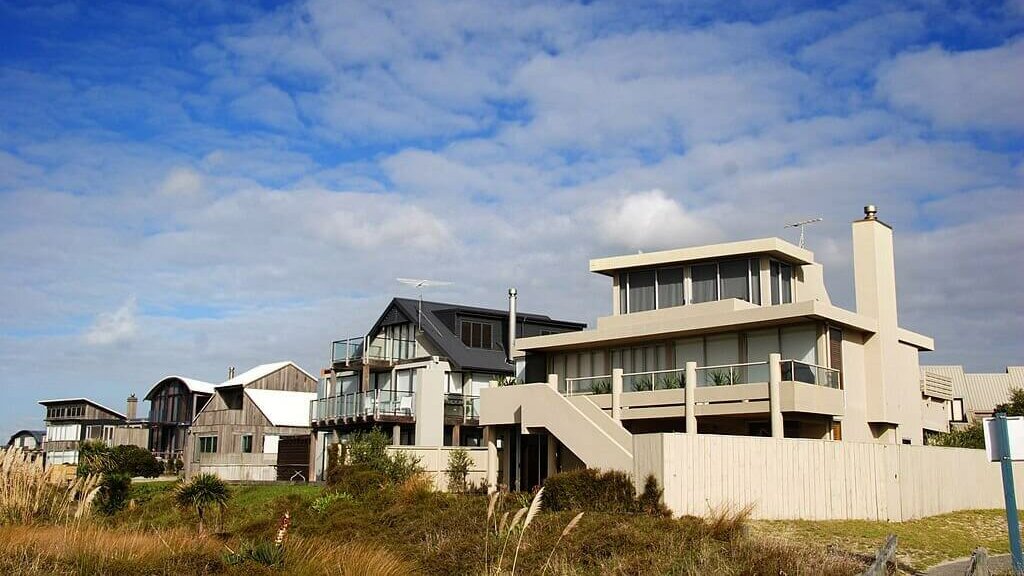
Recent record-low mortgage rates have been reached. The lows can be attributed to COVID, which has caused economic uncertainty. Mortgage rates are expected to remain around 3% in 2021, which is encouraging to buyers.
Millennial homebuyers have flocked to Nebraska and will continue to do so. The National Association of Realtors named Omaha-Council Bluffs one of the top ten locations for millennial homebuyers based on wage prospects, housing prices, and the presence of jobs in industries insulated from the flu pandemic.
In the Omaha-Council Bluffs metro area, a house is worth $201,112. As of June 2020, Realtor.com reports that the median sale price for homes in Omaha was $219,000.
According to homesnacks.com here are the
Most Affordable Places To Live In Nebraska
- Schuyler
- Alliance
- Lexington
- McCook
- Sidney
- North Platte
- York
- Holdrege
- Beatrice
- South Sioux City
most expensive places to live in Nebraska for 2021:
- Lincoln
- Omaha
- Wayne
- Fremont
- Kearney
- Chadron
- Blair
- Scottsbluff
- Norfolk
- La Vista
Traffic & Transportation
You’ll need a rental car if you wish to explore outside the cities in Nebraska because the state has a rural nature. Public transportation is virtually nonexistent, so you will be confined to one location without a car.
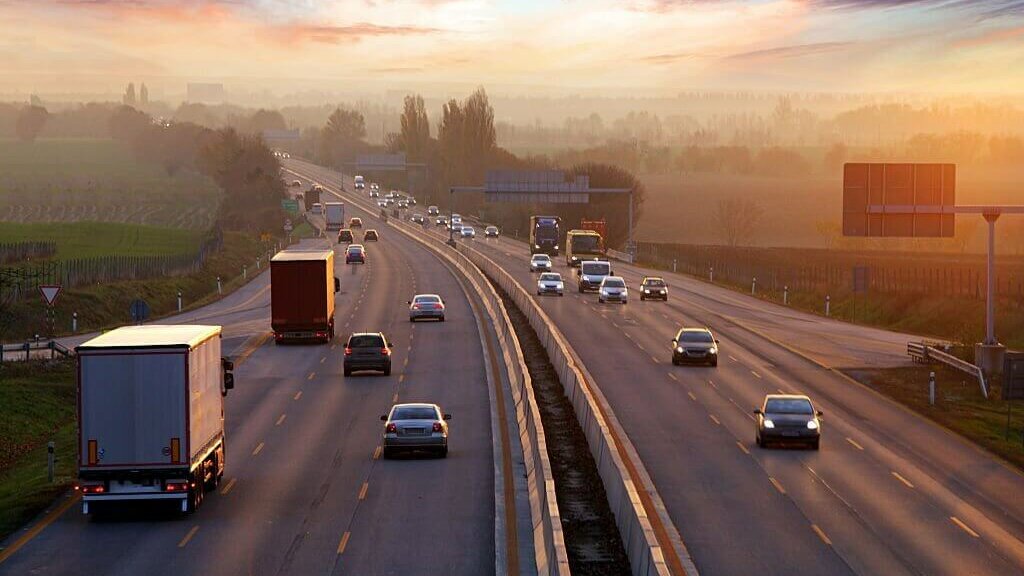
Taxis are only available in large cities like Omaha and Lincoln. Considering that no Omaha destination is more than a few minutes away, they are a good value.
Omaha and Lincoln, for example, have a bus system that caters more to locals than tourists, and so a car in either city pays for itself somewhat in terms of convenience and taxi fares. In Omaha or Lincoln, you can rent a car at the airport or downtown from most major American rental agencies.
Getting into Nebraska by train is only worthwhile if you are heading to the east or west. From San Francisco to Chicago, the Amtrak California Zephyr passes through the heart of the state every day.
The city bus system is only available in Omaha and Lincoln. You can reach the zoo from downtown Omaha using Metro Area Transit, while StarTran covers a number of main points around Lincoln.
Weather
East of the state’s border there is a humid continental climate, and west of it is more arid. During summers there is a tendency for temperatures to go up quite a bit while in winter temperatures can go down considerably.
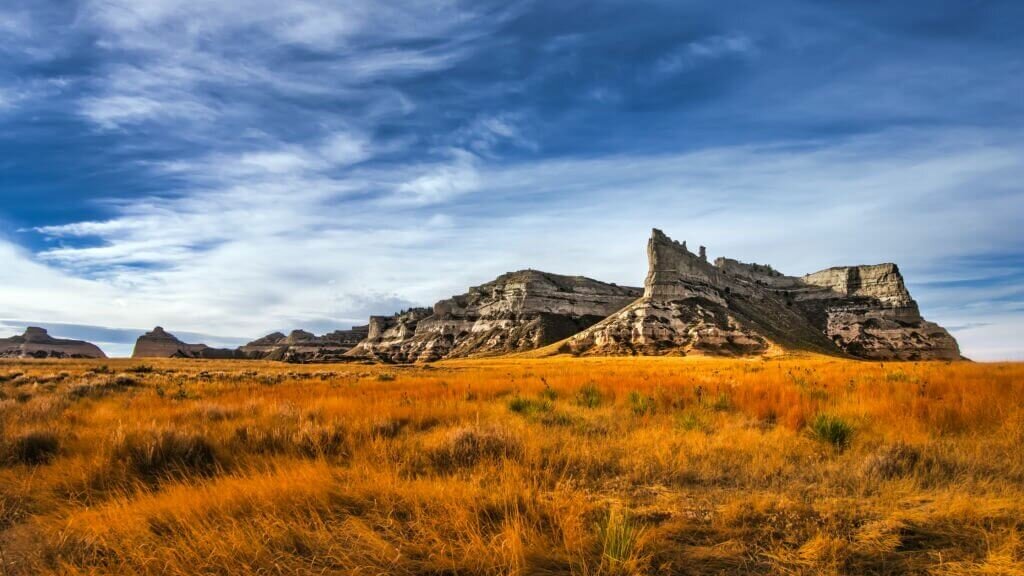
At the peak of July, temperatures range from 85°F to 90°F with daytime highs averaging 85°F (29.4°C) to 32.2°F (32.2°C). Winter temperatures in the northeast are the coldest, whereas winter temperatures in the panhandle are the coldest year-round.
January is typically the coldest month of the year with temperatures averaging 10°F (-12.2°C) to 20°F (-6.7°C).
Spring is marked by strong thunderstorms and tornadoes, although moderate temperatures are present. There is less rain and more heat in autumn, although there are occasional storms in September.
There are rainy seasons in Nebraska from May to September, which is at its peak in June and July. It averages 25″ (635mm) in the east and 32″ (812.8mm) in the west and panhandle.
In comparison to the western portion of the state, the eastern portion is significantly more humid.
Snowfall varies from as early as October to as late as April and reaches 21 inches (534mm) in the south and 45 inches (1143mm) in the northwest. With 210 to 230 sunny days a year, Nebraska receives ample sunshine. The average temperature is consistent statewide, but the temperature and precipitation can vary wildly by season.
Weather hazards
Tornadoes and thunderstorms are more common in Nebraska in the spring and summer. The storms are favored by the presence of low-pressure systems that carry moist air and are conducive to their formation.
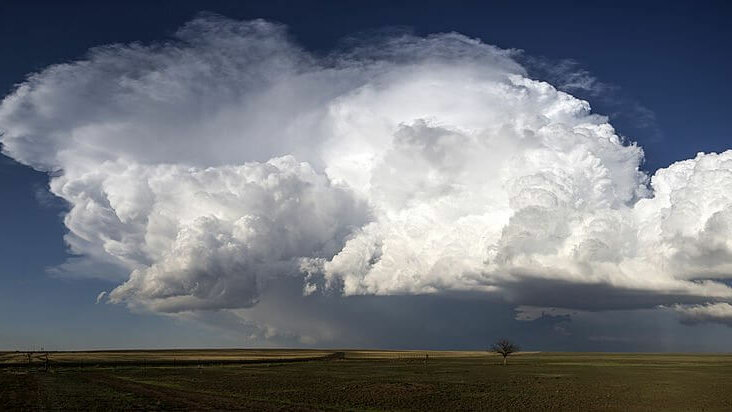
Rain falls more frequently during thunderstorms, with an average of 45 to 50 storm days a year. During a typical year, there are an average of 45 tornadoes in the state’s boundaries. Increased rainfall has resulted in riverbank flooding.
Flash floods sometimes occur as a result of heavy rainfall during thunderstorms. Western parts of the state are occasionally affected by droughts, which receive less rainfall.
[elementor-template id=”13247″]
Pros and Cons of Living in Nebraska
Pros
- Low population density
Nebraska is home to around 1.9 million people and boasts one of the lowest population densities in the country. Get ready to breathe freely in the open space while living here.
- Bunch of career opportunities
This state offers massive career prospects and has one of the lowest unemployment rates in the country. The job market has increased by 1.2% over the last year.
- Superior Education
Nebraska is known to have the 14th highest public school funding in the nation and it consistently ranks among the top 20 states in the country for offering stellar education.
- Reasonable Cost of Living
The cost of living in Nebraska is about 11% lower than the US average, making it one of the top 10 affordable states in the country.
- Well-maintained roads
Roads and highways in this state are maintained on a regular basis to cut down the commuting time.
- Delicious Food
Nebraska is home to a myriad of delicious food items such as Chicken-Friend Steak, Bone-in Ribeye, Pork Tenderloin Sandwich, etc.
Cons
- Landlocked state
If you like mountains and beaches, then Nebraska might not be a good option for you. It is extremely flat and does not boast elevation changes and varied landscapes.
- Prone to natural disasters
This state is located in the tornado alley and experiences some of the worst twisters in the country every year.
- Crime Rate
Nebraska is not at all a safe place to reside in. The overall crime rate of the state is far above the national average particularly in big cities like Lincoln and Omaha.
- Weather
Unfavorable weather condition is one of the major disadvantages of living here. Summers are extremely hot and humid while winters are freezing with heavy snowfall.
All US states have wacky laws but Nebraska’s just happens to be extra bizarre. For instance, men are not allowed to run around with the shaved chest or mothers cannot give their daughter’s perms without a state license.
- Higher Income Tax Rate
Nebraska’s residents will have to pay a heavy income tax rate of 6.8% (far above the US average of 4.6%) for living here.
Things to Do in Nebraska
- Henry Doorly Zoo
- Sunken Gardens
- Toadstool Geologic Park
- Museum of American Speed
- Old Market
- The Durham Museum
- Bob Kerrey Pedestrian Bridge
- Lauritzen Gardens Omaha’s Botanical Center
- Niobrara River
- Joslyn Art Museum
- Great Platte River Road Archway Monument
- Crane Trust Nature & Visitor Center
- Union Pacific Railroad Bailey Yard
- Lincoln Children’s Zoo
- Omaha Children’s Museum
- Lake McConaughy
- TD Ameritrade Park
- Smith Falls State Park
- Classic Car Collection
- Golden Spike Tower and Visitor Center
Conclusion
The above guide can help you to a great extent when you are moving to Nebraska State. Compared to the national US average, the average cost of living is very low in the state which makes it very affordable to stay.
The booming economy in the last two decades has opened up many job opportunities. Common job and high paying job availability is very nice here.
The top employers are mainly located in the areas like Omaha, Dakota City, etc. which has also improved the infrastructure here. A progressive tax structure has 4 brackets and a sales tax of 5.5% here.
When you move to Nebraska, you can experience a well-developed transportation network that makes it simpler to move from one location to another.
The climate here is very pleasant that making it simpler to stay here. There are several places and things to do here that can rejuvenate. Come to Nebraska to have a very pleasant living here.
[elementor-template id=”11713″]
